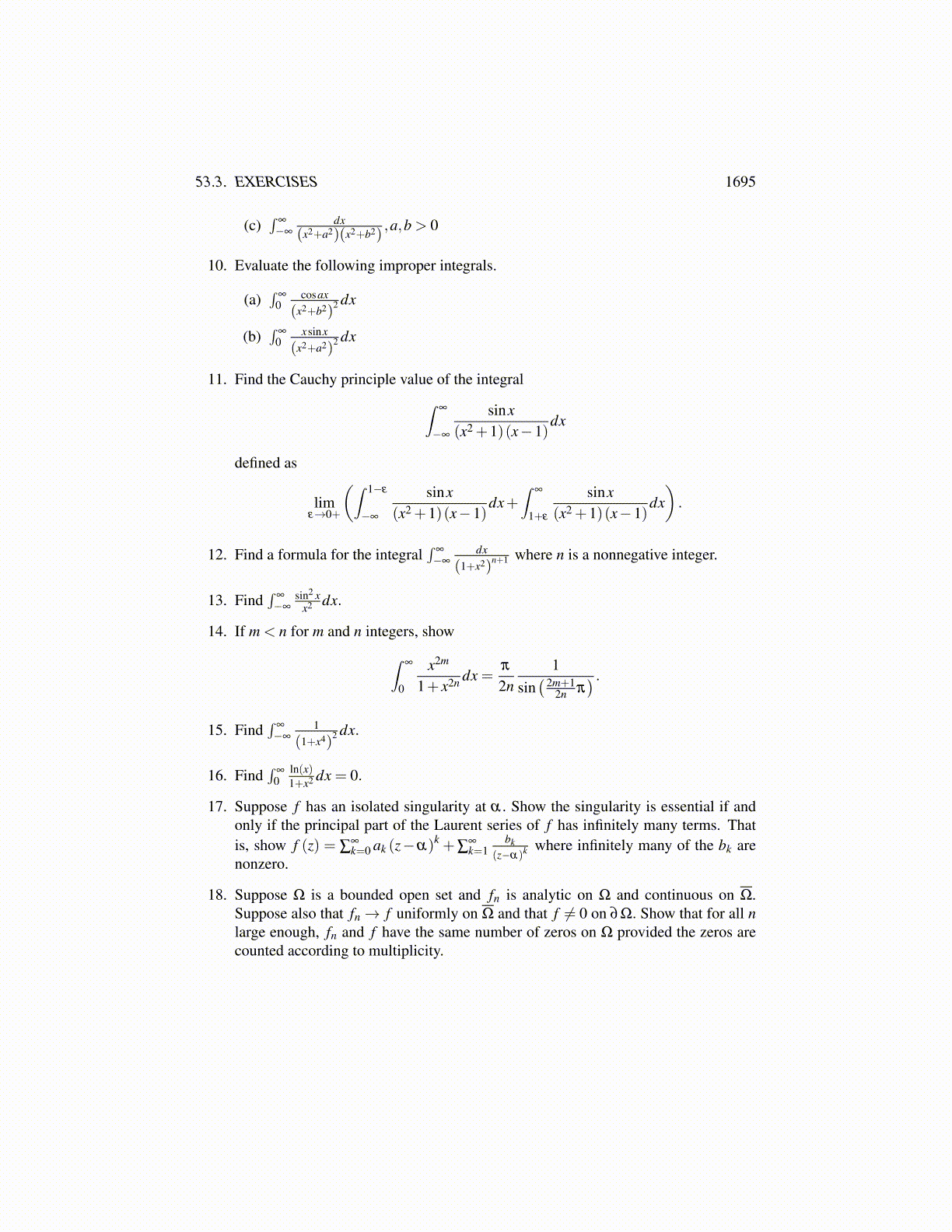
53.2. SINGULARITIES AND THE LAURENT SERIES 1695
which converges to zero as r→ ∞. Therefore, taking the limit as r→ ∞,
√π
2
(1+ i√
2
)=∫
∞
0eix2
dx
and so ∫∞
0sinx2dx =
√π
2√
2=∫
∞
0cosx2dx.
The following example is one of the most interesting. By an auspicious choice of thecontour it is possible to obtain a very interesting formula for cotπz known as the Mittag-Leffler expansion of cotπz.
Example 53.2.13 Let γN be the contour which goes from −N − 12 −Ni horizontally to
N + 12 −Ni and from there, vertically to N + 1
2 +Ni and then horizontally to −N− 12 +Ni
and finally vertically to−N− 12−Ni. Thus the contour is a large rectangle and the direction
of integration is in the counter clockwise direction. Consider the following integral.
IN ≡∫
γN
π cosπzsinπz(α2− z2)
dz
where α ∈ R is not an integer. This will be used to verify the formula of Mittag Leffler,
1α2 +
∞
∑n=1
2α2−n2 =
π cotπα
α. (53.2.12)
You should verify that cotπz is bounded on this contour and that therefore, IN → 0as N → ∞. Now you compute the residues of the integrand at ±α and at n where |n| <N + 1
2 for n an integer. These are the only singularities of the integrand in this contour andtherefore, you can evaluate IN by using these. It is left as an exercise to calculate theseresidues and find that the residue at ±α is
−π cosπα
2α sinπα
while the residue at n is1
α2−n2 .
Therefore,
0 = limN→∞
IN = limN→∞
2πi
[N
∑n=−N
1α2−n2 −
π cotπα
α
]which establishes the following formula of Mittag Leffler.
limN→∞
N
∑n=−N
1α2−n2 =
π cotπα
α.
Writing this in a slightly nicer form, yields 53.2.12.